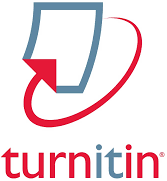EFFECT OF ADDITIONAL GINGER (Zingiber officinale var. amarum) ON FEED ON THE GROWTH AND SURVIVAL LEVEL OF GOLDFISH (Cyprinus Carpio)
DOI:
https://doi.org/10.29303/jfh.v1i2.530Keywords:
Goldfish, Ginger, Growth, Survival RateAbstract
Goldfish is one of the most popular freshwater cultivated fish because it is one of the freshwater commodities that has economic value and is sold at a price that is affordable to all groups. Ginger is a natural ingredient that can stimulate fish growth. The purpose of this study was to determine the effect of adding ginger to feed and to determine a good dose of ginger for growth and survival rates of carp (Cyprinus carpio). This research was conducted by experimental method using completely randomized design (CRD) with 5 treatments and 3 replications. The treatments given were Treatment 1: 0 grams, without adding ginger / kg of feed (control), Treatment 2: 2.5 grams of ginger / kg of feed, Treatment 3: 5 grams of ginger rhizome / kg of feed, Treatment 4: 7.5 grams of ginger / kg of feed, Treatment 5: 10 grams of ginger / kg of feed. The results showed that the addition of ginger had no significant effect on absolute length growth, absolute weight growth, feed conversion ratio, and feed efficiency, but had a significant effect on the survival rate of goldfish (cyprinus corpio). And a good dose of ginger is in P2 treatment with a dose of 2.5 grams of ginger, because it has been able to show a good survival rate of 100%.
Downloads
Published
Issue
Section
License
1. The copyright of this journal belongs to the Editorial Board, based on the author's consent, while the moral rights of the publication belong to the author(s).
2. The formal legal aspect of journal accessibility refers to the same Creative Common Attribution + Noncommercial + ShareAlike (CC BY-NC-SA), implying that publication can be used for non-commercial purposes in its original form.
3. Every publication (printed/electronic) is open access for educational, research and library purposes. In addition to the objectives stated above, the editorial board is not responsible for copyright infringement















